Images: 100-Year-Old Lonesome George Tortoise Goes on Exhibit
Museum collection
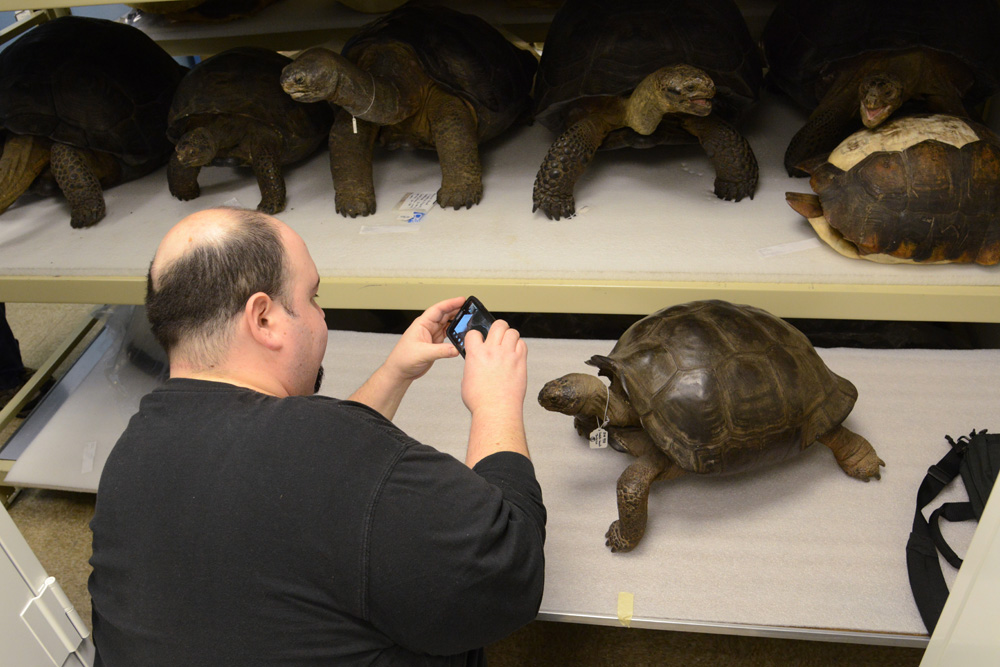
Throughout the taxidermy process, George Dante, founder of Wildlife Preservations, made trips to the Museum's Herpetology Department collection for reference and also consulted with Museum scientists. [Read full story]
Consultation
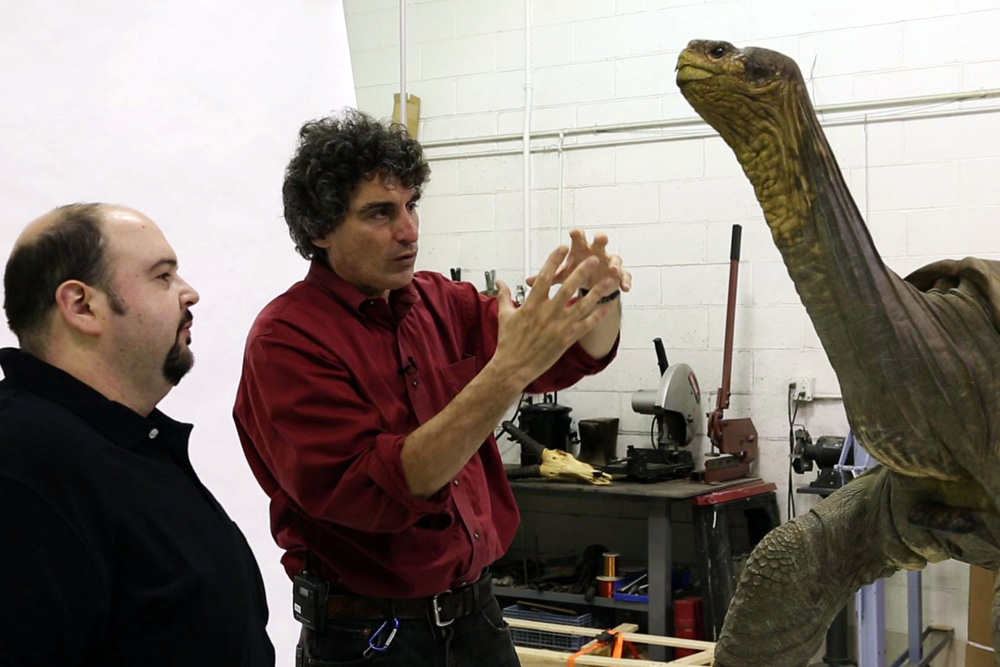
American Museum of Natural History scientists were highly involved in the taxidermy process, consulting with the taxidermists to ensure scientific accuracy in preserving Lonesome George's posture, skin and shell color, as well as other characteristics. Here, Christopher Raxworthy, a herpetology curator at AMNH (right) and George Dante, founder of Wildlife Preservations. [Read full story]
Eleanor Sterling
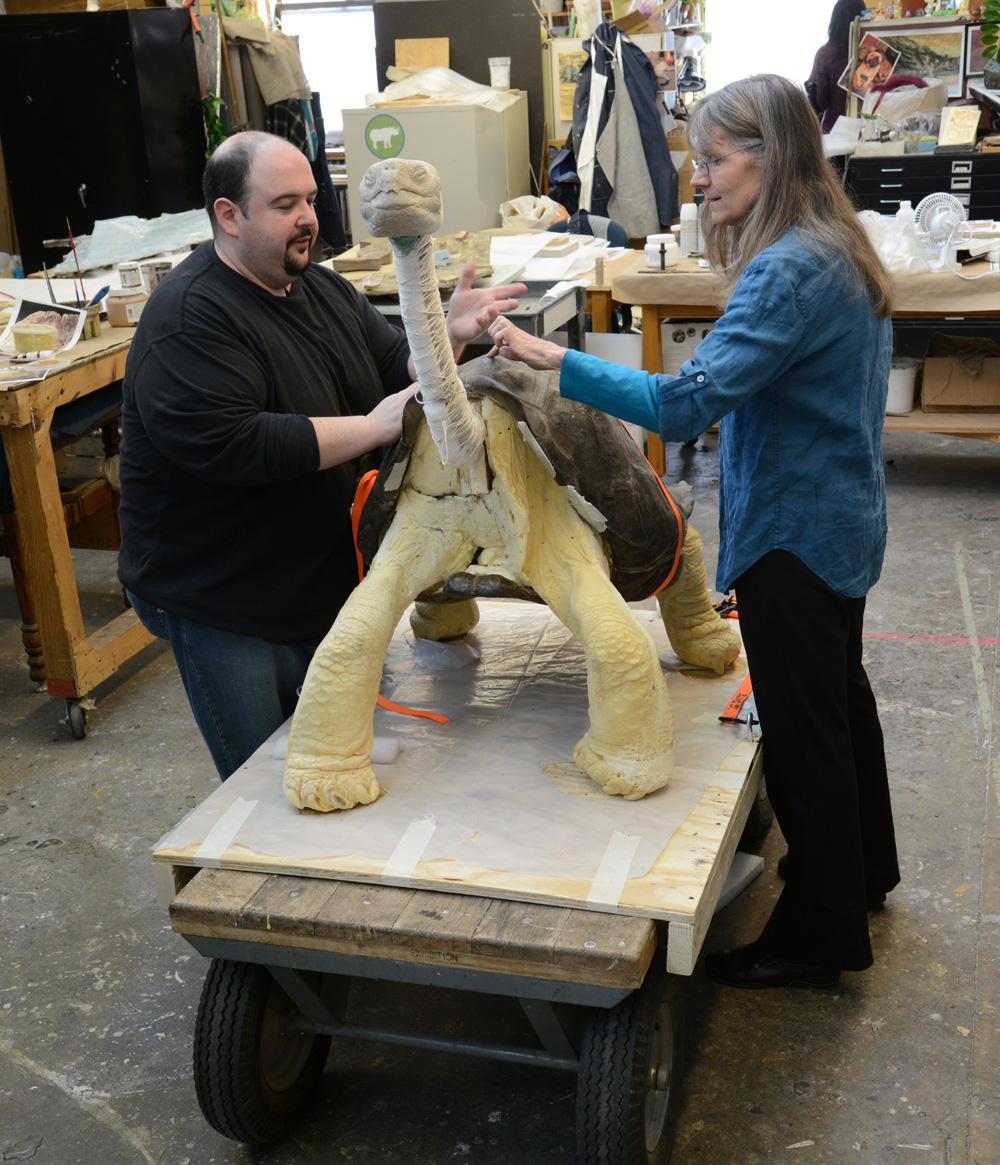
Eleanor Sterling, chief conservation scientist for AMNH's Center for Biodiversity and Conservation (right) and George Dante, during the taxidermy process to preserve Lonesome George. [Read full story]
Darrel Frost
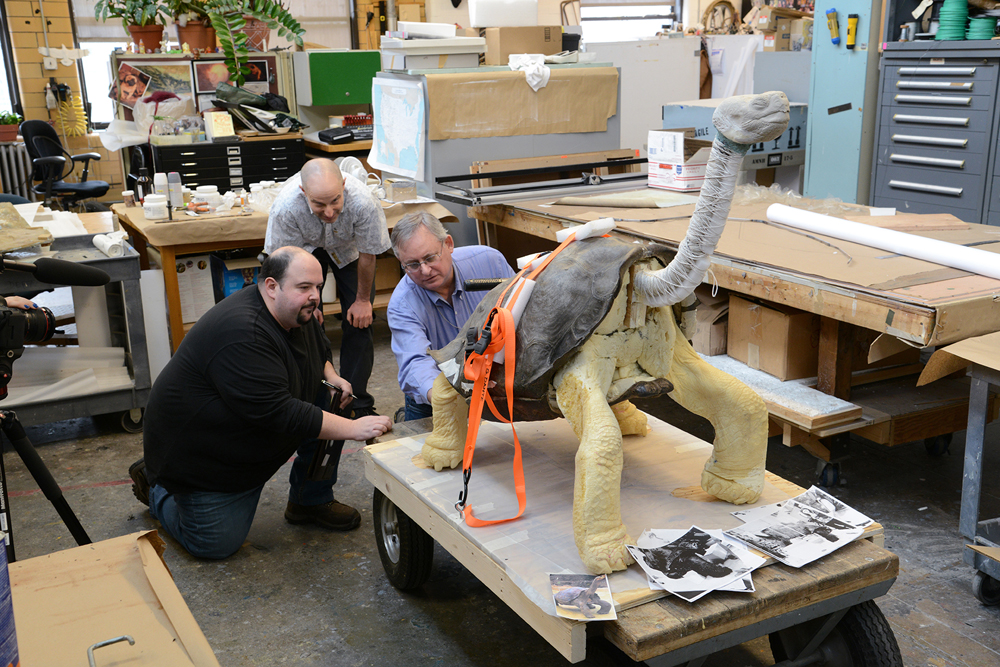
Darrel Frost, AMNH herpetology curator (right) and George Dante during the taxidermy process. [Read full story]
Clay sculpture
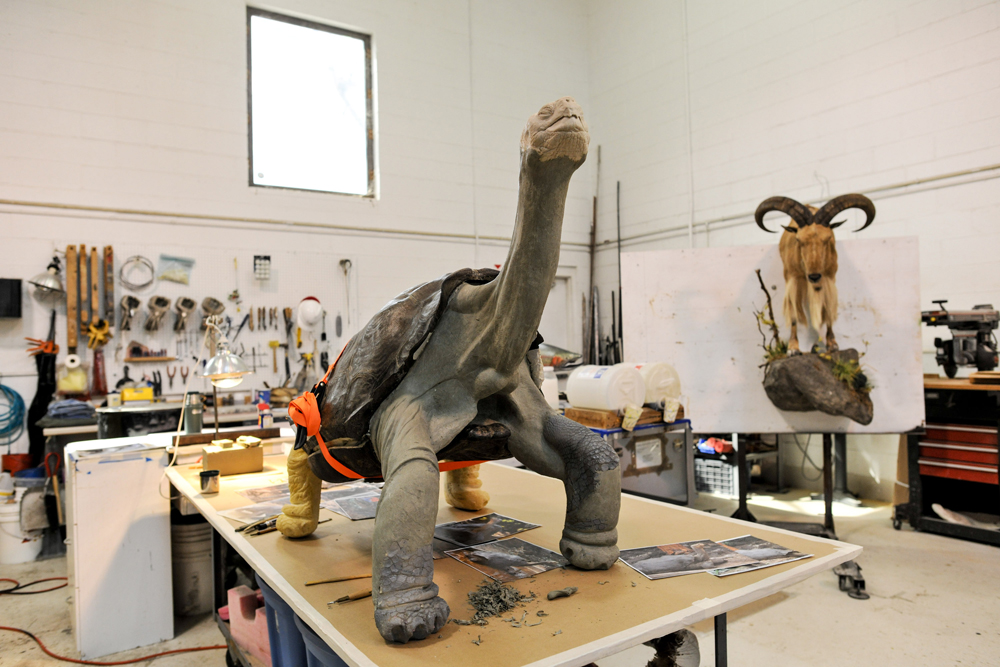
During one of the final taxidermy steps, scientists produced a clay sculpture of Lonesome George, revealing the musculature and shape of the tortoise. Once that clay sculpture is tested and fits perfectly underneath the tanned skin, a lightweight mold is made to replace it. [Read full story]
Clay Sculpture
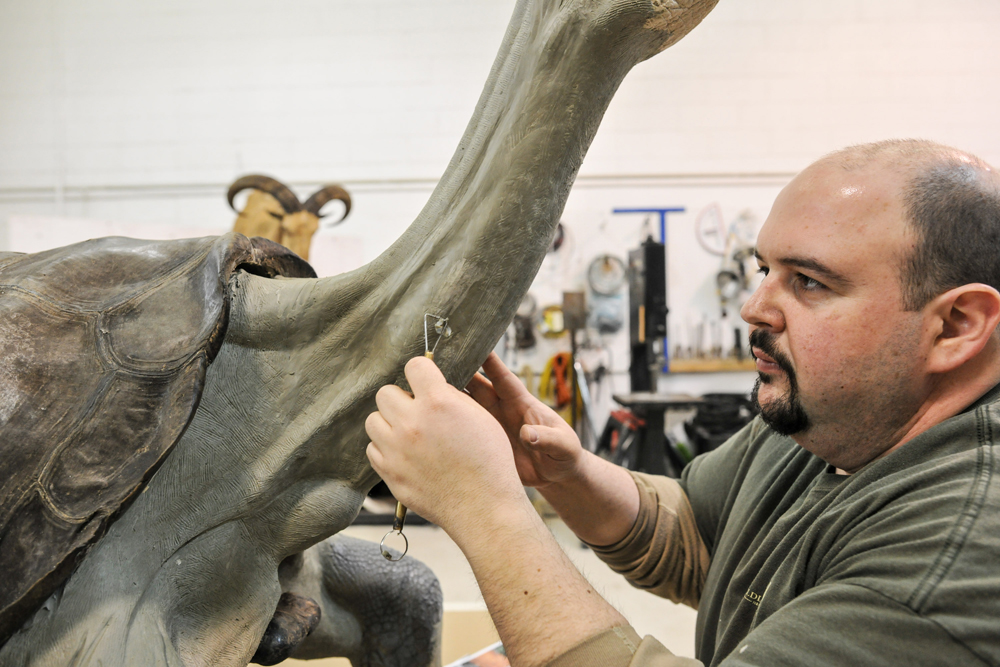
During one of the final taxidermy steps, scientists produced a clay sculpture of Lonesome George, revealing the musculature and shape of the tortoise. Once that clay sculpture is tested and fits perfectly underneath the tanned skin, a lightweight mold is made to replace it. [Read full story]
Lonesome George on view
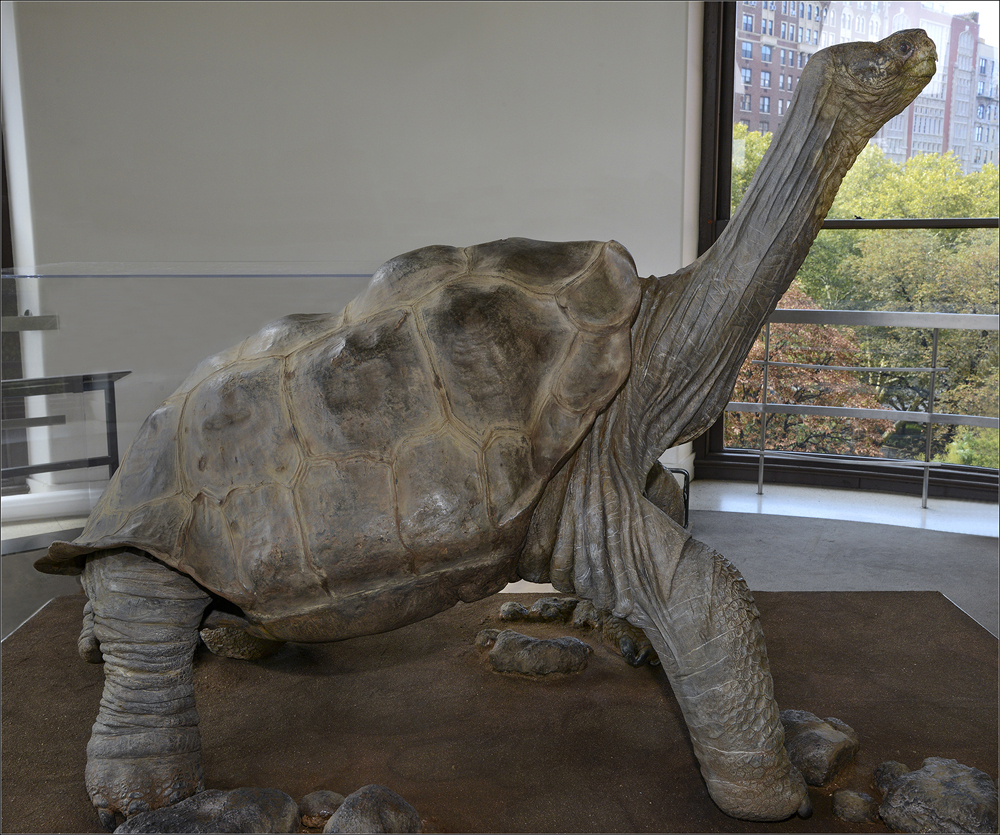
Though Lonesome George's subspecies has died out, scientists still have hope they can establish a breeding colony on Pinta Island using those hybrid tortoises that showed signs of being partially descended from the Pinta Island tortoises. Here, Lonesome George on view in the fourth floor Astor Turret at the American Museum of Natural History through Jan. 4, 2015. [Read full story]
Sign up for the Live Science daily newsletter now
Get the world’s most fascinating discoveries delivered straight to your inbox.










